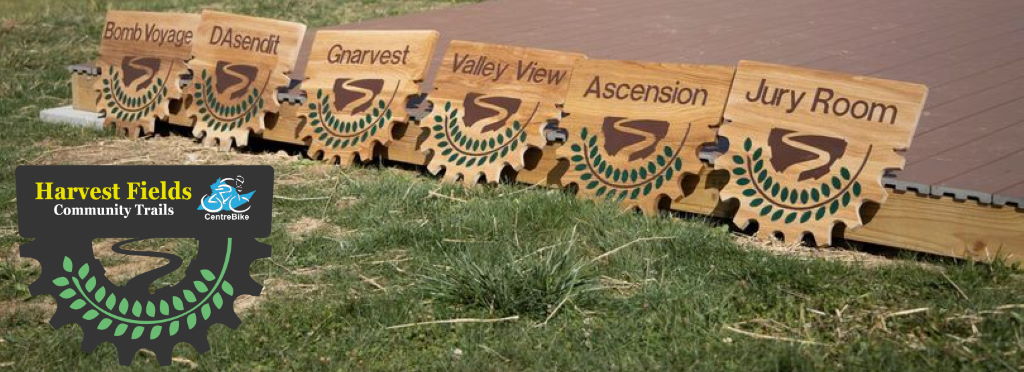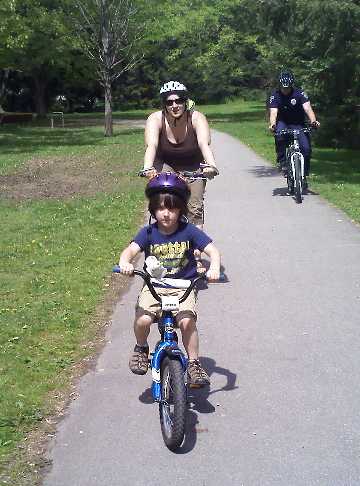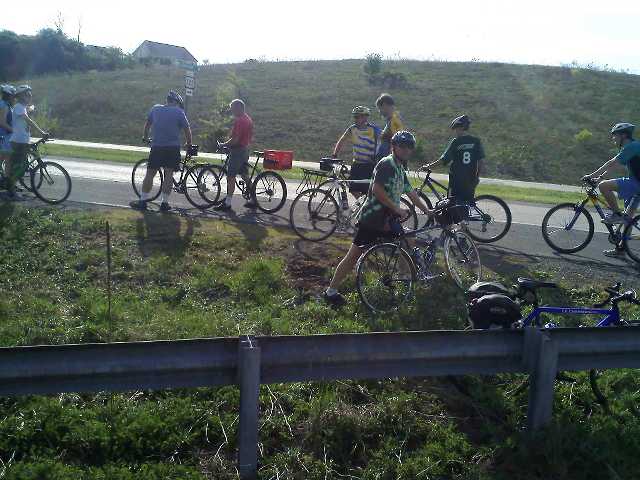Commuting Tips
This is a slightly modified version of an interview I did with Lexi M for the StateCollege.com news website. The story had some length limitations, so I thought I’d post the full text of my response here with a couple of things I forgot to mention in the interview.
1 How long have you been biking to work?
30 years, off and on.
2. How far is the commute?
My latest commute is 4 miles each way.
3. Do you do it everyday?
No. My goal this year is 75% of the time. When I don’t ride, I usually take the bus. Low carbon footprint and all.
4. Why do you do it?
Exercise. Physical and mental health. That low carbon footprint. Less wear and tear on the car, and I save $32/month in parking fees and $30 or more in gas. Car insurance costs less since I put fewer miles on the car annually. And it’s fun to show up at work when it’s been raining, sleeting or it’s 15 degrees outside and hear the “your crazy”s. Not really. Just ready for the weather.
5. Have you ever had a bad experience, a crash or accident while biking to work? Explain.
Oh, more than I’d like to remember. ;) Mostly minor falls. Skinned knees and the like.
I had a minor altercation with a vehicle once when we both wanted to be in the same space — my fault more than his. My tricep took off the car’s antenna, but other than a big bump on my muscle for a couple of weeks, the rest of me and the bike were OK.
6. How could you have avoided that?
Oh, rather easily (He says as he rubs his arm), by expecting a car to be turning whether or not it has a signal on. In other words, better awareness and anticipation. I also took the “Street Skills for Cyclists” course that Penn State offers (more info on that below) and learned a thing or two about how to avoid such situations.
7. What tips would you give to people who are new to biking as a form of commuting?
- Ease in. Try to do 1 or 2 days a week and build up.
- Most of the time it’s fun, but sometimes it’ll suck. (It’s a commute, after all.) Try not to get discouraged by a bad day.
- Don’t have a “ride” (i.e., a bike) yet? Visit and patronize the local bike shops. They’ll help you pick a bike that that is appropriate for your needs, both physically and financially. For example, if you’re looking at a 3-5 mile one-way commute, almost any kind of bike will work. From 5-10 miles, a good commuter oriented bike will work well. Above 10 miles, you’ll want to look at a cyclocross or road bike to both lighten your load and increase your speed potential. 20-30 miles a day with a load can be taxing and the right bike can make the difference between trying to commute once or twice and becoming a life-long commuter.
8. For those commuters who wear a suit to work, how can they still appear professional at work, after biking (especially during the hot summer months)?
- If you don’t have shower facilities at work, try Rocket Shower! It’s a commercial product that lets you take a “dry” shower. Mixture of water, witch hazel and a few other things, but it works great.
- Keep a change of clothes at work for those emergency days, like an unexpected rain shower. (Some travel toiletries are handy, too.)
- If you can get away with it, golf shirts are useful for the same reason golfers like them — they dry quickly. (keyword: Nylon). And advocate for change at your workplace. Some businesses allow “Casual Fridays” all week during the summer — it helps to reduce air conditioning costs . Ask your boss to do his/her bit for the environment and adjust your workplace’s hot weather policies. As a bonus, they’ll save money, too.
- Wear as little as possible on your commute and put it on when you get there. There are plenty of cycling accessories to carry your stuff. (and remember #2)
- Check all the routes to your workplace. The shortest route isn’t always the most optimal. If you ride an extra 1/2 or 3/4 of a mile to go around a hill rather than over it, you can spread out the effort and keep an easier pace.
- Use the bus to shorten a long commute. All CATA buses have front bike racks. Handy for those unexpected storms, too.
- Do your own version of “park & ride” — drive part way and ride the rest.
- If you can leave your car at work overnight, try half-commutes. Drive your bike in in the morning, ride home, ride to work the next day, drive home, and so on…
- If you have a strenuous commute, give yourself an extra 15 minutes to cool down and dry off.
- For cold/wet conditions: Gore-Tex (or any of it’s post-patent-expiration equivalents). It is a wonder material. Expensive, but worth every penny.And remember, you’re saving $60/mo, so invest some of that in your comfort.
- Become a weather nut. Most rain storms do not last all day. If you have flex hours, use them (or negotiate them as part of a climate change pact with your boss). Watching the local radar in motion, you can gage whether you should leave 15 minutes early or wait for an hour. You can stay dry even on rainy days.
- Fenders will keep that nasty line of mud and grime off your back. Most of the shops have quick on/off fenders, too, if you don’t want them on permanently.
9. Have you ever ridden your bike on campus? If so, what are some tips for easy/less stressful riding?
Almost every day I commute.
As for less stress? Yield to pedestrians. And try to let them know you’re there. Hard sometimes in this age of ear bud appendages, but a bell or “On your left/right” will keep the everybody’s surprises to a minimum.
Being essentially a grid, there are often alternate ways to get anywhere on core campus. So, just like commuting off-campus, look for alternate routes that aren’t so busy. Instead of Burrowes, use the parking lots and Fraser Rd. Instead of Curtin, use the walks to the south of Pattee and Armsby, or Polluck which is blocked to through traffic during the day.
10. Have you “converted” anyone to bike riding? If so, how?
Yeah, but it’s more of a “When the student is ready, the teacher appears.” situation. The most important thing is *not* to make your bike commute, or any bike ride for that matter, so miserable that you’ll never want to do it again. (refer back to question 7 — the “ease-in” part)
11. What other tips can you give to local riders (safety, laws they should know, comfort, routes, resources, etc.)?
- I’m a proponent of always wearing a helmet. At 15 mph, hitting something will give you a mean concussion. Meeting up with 3500 lbs of metal going 20 mph in the other direction is a fractured skull and a brain injury. Everything’s not under your control. You won’t be expecting a front tire flat that causes you to lose control Be prepared.
- The CRBC has a multitude of resources listed on their website at http://www.centrebike.org. I have a number of ride maps and cue sheets listed on my own website at http://rito.us/rides.
- Get the CATA/CRBC Bus/Bike map. All the bike shops have them. They’re a bit out-of-date, but still a good resource.
- As I mentioned above, Penn State offers “Street Skills for Cyclists” as part of their Health Matters program. It’s a great course and even having been a commuter/avid cyclist for many years, I learned a lot. There are two sessions coming up soon and they are open to the public. [UPDATE 11-3-16: CentreBike is now offering the Street Skills for Cyclists course through Centre Region Park and Recs. We’re planning on two (or more) courses per year, one in the spring, one in the fall. Check the CentreBike Events page (to the right or bottom of this page, or the CRPR Program and Events Menu for a list of classes. Our affiliated League Cycling Instructors are available for private group/business classes, too.]
- SEE AND BE SEEN. Lights are cheap safety equipment. Blinkies front and back for visibility of others seeing you — more powerful headlamps if your commute takes you on dark paths or streets so that you can see potential obstacles. [UPDATE: 11-3-16: Since this article was written, LED light technology has improved tremendously. The lights are more visible and some are available with day/night modes and many are rechargeable. With increased driver distraction, we now recommend that you always ride with lights — minimally a blinkie back AND front.]
- Avoid being a “Ninja Cyclist” — dark clothes and no lights (a.k.a., Organ Donors).
- It’s illegal to block your hearing while operating a vehicle in PA. Leave the iPod in your bag and listen to the birds and the wind blowing through the trees. Or do some meditation on an upcoming test. If you simply can’t do without Lady GaGa on your commute, at the least, keep one ear open.
- Most states now have websites specifically for biking and they’ll list the laws that apply to bikes. PennDOT’s is at Just Drive PA.
Have tips of your own? Share them by adding a comment to this article.



